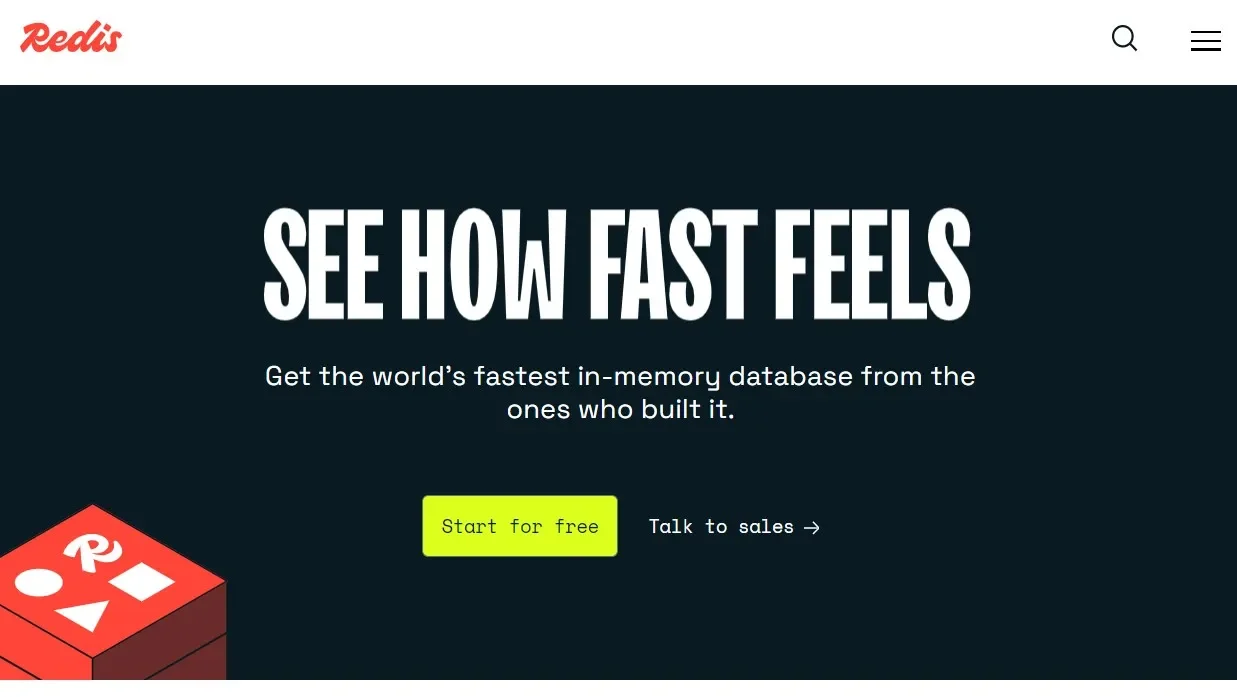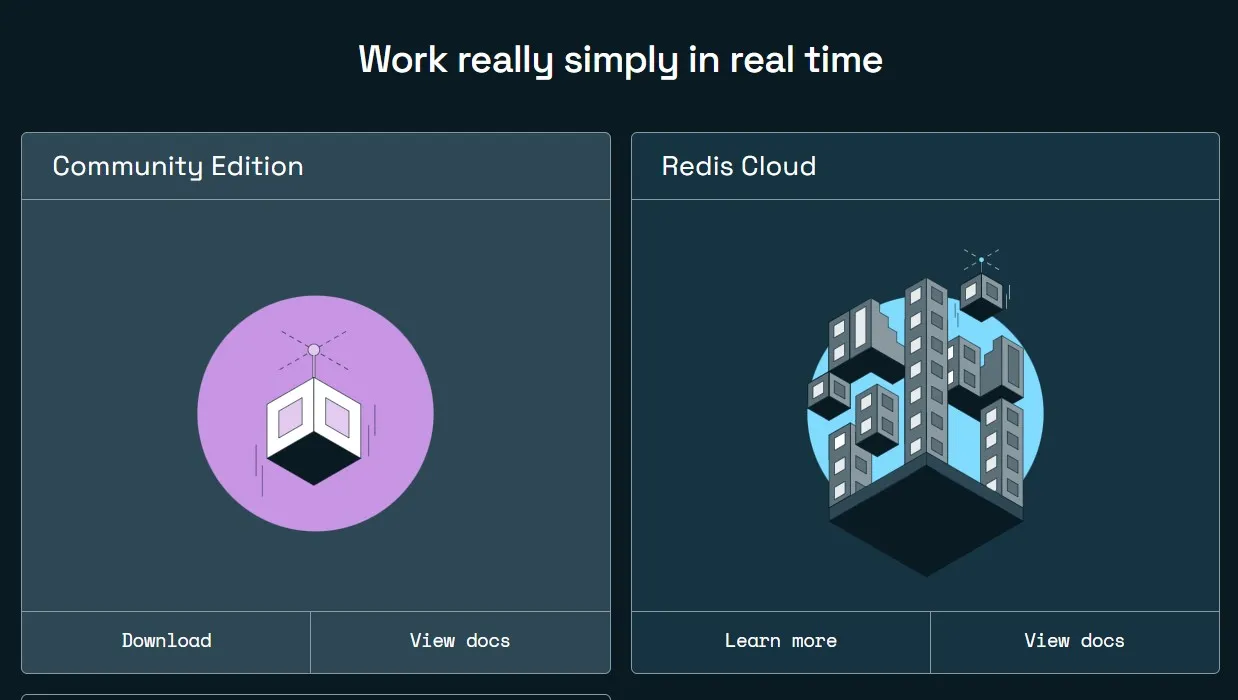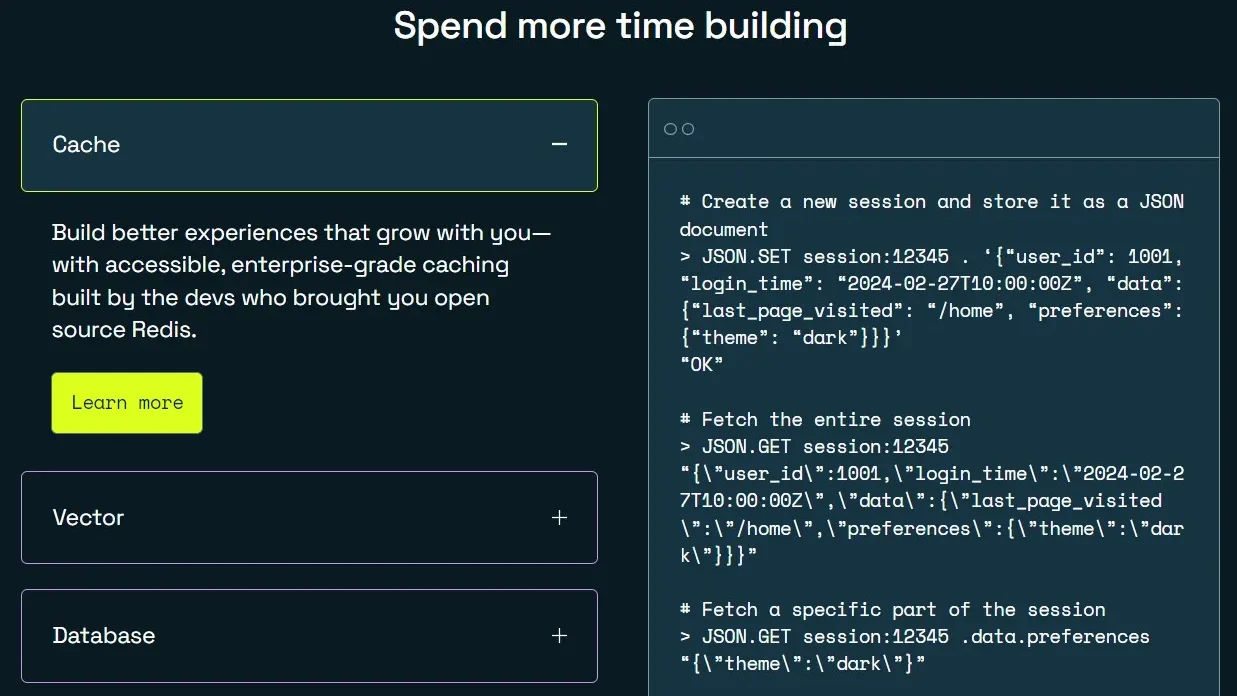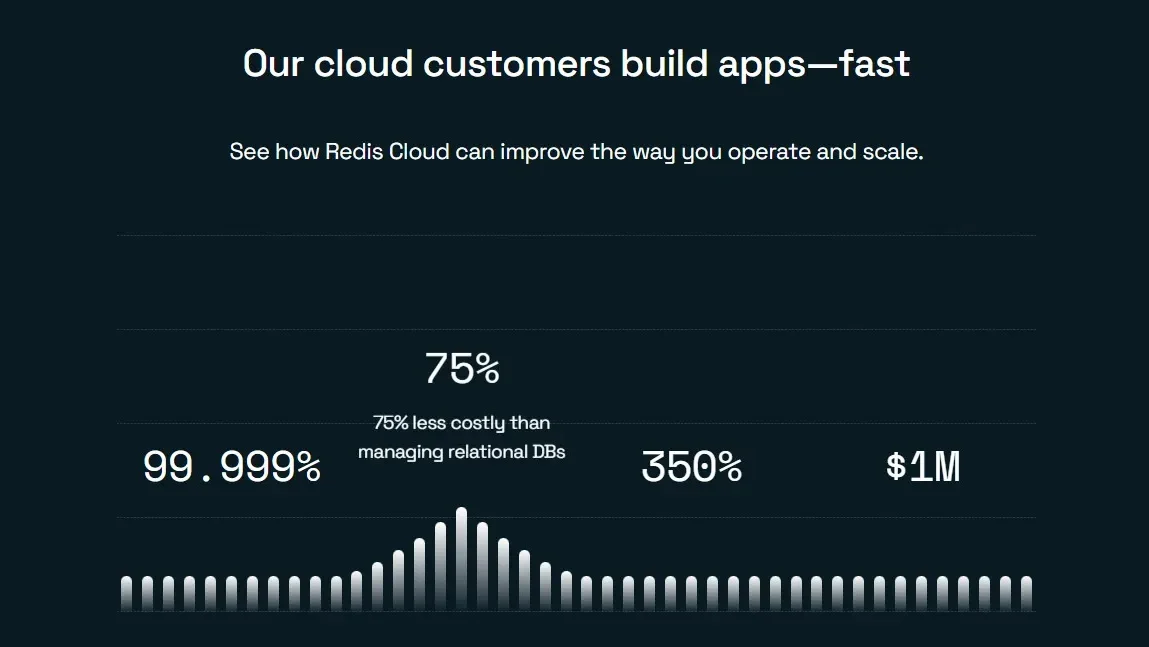Explore Redis
No Information yet
See how Redis works on Video
Redis Pricing and Features
Redis Product Experience
Most frequent question about Redis
Redis is an open-source, in-memory data structure store. It can be used as a database, cache, and message broker. Redis stores data in memory, which allows for extremely fast data access times compared to traditional disk-based databases.
Redis supports various data structures such as strings, lists, sets, sorted sets, hashes, bitmaps, hyperloglogs, and geospatial indexes. It provides high-performance operations on these data structures, making it ideal for real-time applications and scenarios requiring low-latency access.
Redis can be used as a database by storing key-value pairs in memory. It supports persistence options to save data to disk for durability. Redis is commonly used for caching frequently accessed data, session management, leaderboard management, and more.
Redis is highly effective as a cache due to its in-memory storage and fast data retrieval capabilities. By caching frequently requested data, Redis reduces the load on backend databases and improves overall application performance. It supports features like TTL (Time To Live) for automatic data expiration and eviction policies to manage memory usage.
Redis is known for its speed, scalability, and versatility. It handles millions of requests per second with low latency, making it suitable for real-time applications like messaging systems, real-time analytics, gaming leaderboards, and session stores. Its ability to handle high concurrency and its rich set of data structures make it a preferred choice for high-traffic websites and applications requiring real-time data processing.
Try these alternatives of Redis
Dovetail centralizes customer data for insightful analysis and collaboration. Ideal for teams seeking actionable insights to drive product development, marketing, and customer-centric initiatives. It empowers businesses of all sizes to make informed decisions.
Linear revolutionizes project management for modern software teams with unmatched speed, intuitive design, and seamless integrations. Ideal for agile teams, product, and project managers seeking efficient workflows and meaningful progress.










